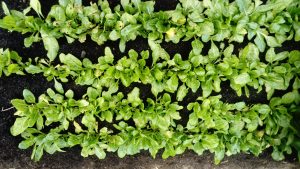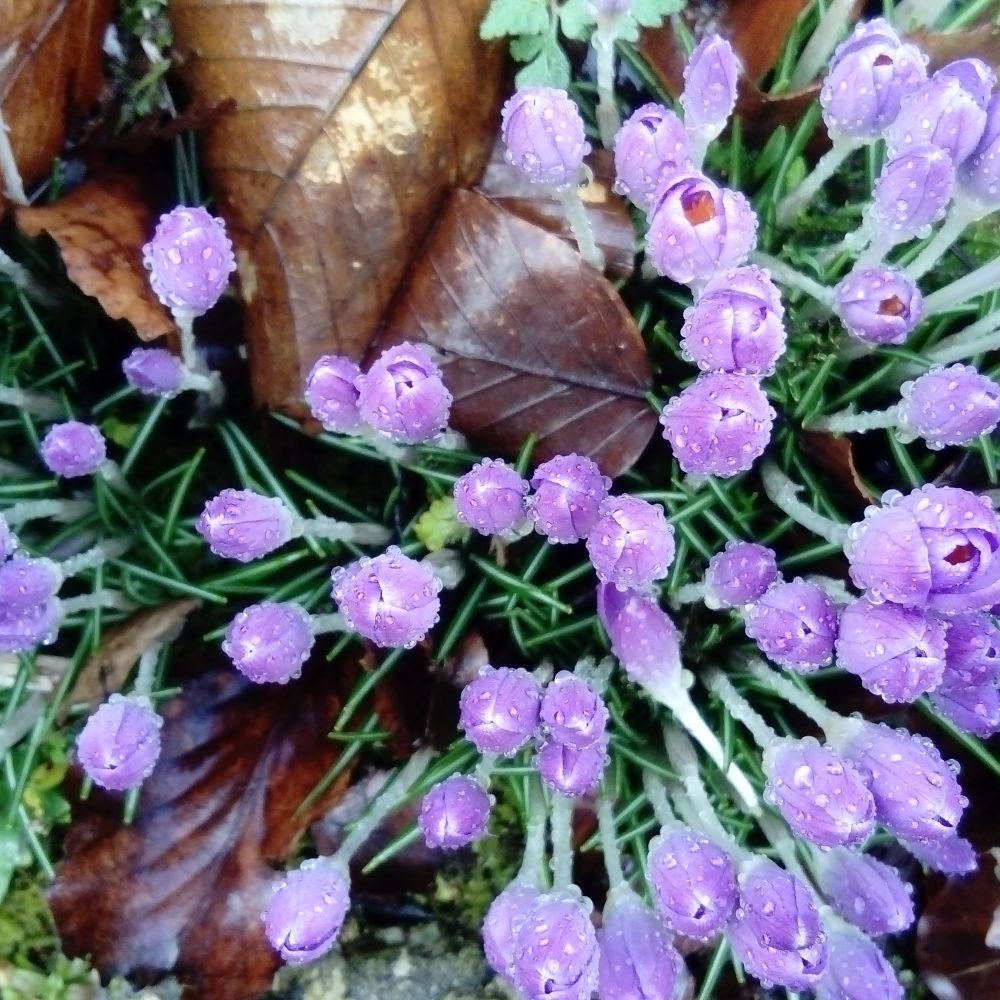
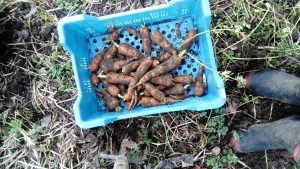
Around the time I notice the sky straining with light as we finish dinner and the bees feasting on snowdrop nectar, it happens. The last onions in the crate are gathered and chopped into a curry. Last year’s garlic is almost gone, and although this season’s bulbs are proudly poking green stems taller, it will be a long time until we taste the tang of Spring garlic. And so it happens; I am digging the last row of carrots, in a bed that seemed endless only weeks ago. I am defiantly prising them from the maw of soil and the greedy glug of slugs.
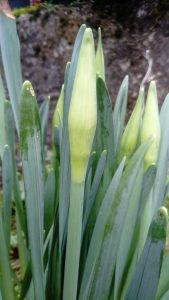
As we watch yellow tips tightly wrapped in green gather on our driveway in anticipation of a golden spectacle, we are pulling crimson balls of beetroot and watching another bed empty it’s belly. Finished. The end of Harvest. The end of Winter. The so-called ‘hungry gap’ begins. The crossing of the threshold from Spring to Summer.
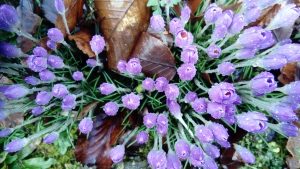
With all the new signs of growth it comes as a surprise that this is a season of less, not more. At least in my harvest basket. It is a time of more planting, more growing, more tending, watching and waiting. Even the watering can is getting filled again. But this is the season of less picking and eating. What is left in the garden or in our store is waning and we are waiting. New shoots in seed trays show signs of hope that it will all happen again. Yet we are faced with squishy onions and worm eaten carrots to prepare for dinner. The signs of spring are signs of hope. But hope infers waiting. So here we are again, pressing tiny seeds into dark squares of compost, while spring snows and biting winds compete with stretching evenings and balmy breezes.
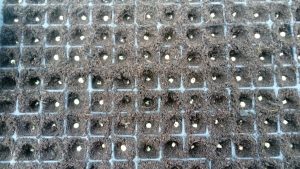
It is a season of contradiction and juxtaposition as old jostles with new. Darkness and light, cold and heat, sowing and, not yet, reaping. While the outburst of growth all around makes me think it should be a time of abundance in my foodstore, it is in fact a season of reduction, at least on the surface. Under the ground there is plenty of fervent action. It seems strange that through the darkest months of winter I was harvesting more from the garden than I am now. As a relative novice to seasonal vege eating, I didn’t expect to have so much variety through Winter. Bulb fennel, carrots, beetroot, lettuce, radish, broccoli, Brussel sprouts, cabbage, spinach, rainbow chard, coriander, Jerusalem artichoke, scallions, leeks, squash, onion, garlic and of course kale all offered to our table through the winter months. Plants that had gone into a sort of stasis at late Summer’s end kept on giving fruits for our table.
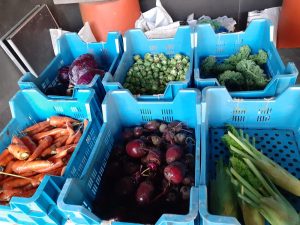
It seems to me that there is a sort of grace about Winter. We get a whole lot more than we give during that season of hibernation. True, we have laboured long and hard to get those plants in the ground growing through Spring and thriving through Summer. As Autumn shelters the soil with a layer of leaf mulch and we withdraw from the ardent garden rhythms of Summer months, we might expect the garden to do the same. Yet, there is a continuity of provision that feels gracious, perhaps because of a lack of expectation of anything more in return. I always feel a deep sense of favour when my Winter visits to the garden involve taking without giving. In Summer I feel that I have earned the right, through the soil beneath my nails, to every green bean, carrot and tomato gathered. In Winter I can only feel gratitude as a recipient of benediction. As the carrot bed is cleared, I can accept that the soil on my spade has returned more to me than I could have asked.
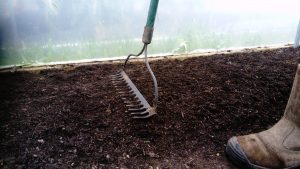
As new buds form on trees, it is time for the last vestments of the harvest season to be shed, making way for new seeds. Out with the old, in with the new. So here we are again, knowing that there is a reason for this season of waiting. We know, because we have been here before. We hope for harvest. When we sow, we trust for growth. And, as we wait for the season of abundance again, there are always new ways to eat spinach and kale.
